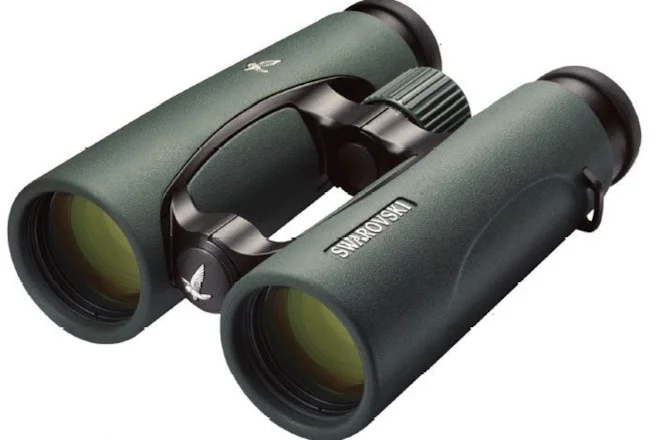Swarovski 10x42 EL II binocular
In an ever-changing optics market, a company of Swarovski’s stature might have been expected to refresh its flagship product long before now. Launched in 1999, it has remained fundamentally the same binocular ever since. Perhaps that is testament to the quality of the original design, which at the time was revolutionary; the sales success that ensued led to competitors revamping their own products and, in one case at least, launching a lookalike model onto the market. Imitation, they say, is the sincerest form of flattery.
But change is inevitable, especially in the face of strong competition from the likes of Zeiss’s highly rated FL range. Technological advances since the late Nineties also meant it was time to look again at the EL and bring it up to date. That process has taken longer than expected, and the initial launch in summer 2008 (see Birdwatch 194: 50) was followed by a lengthy hiatus while production issues were resolved.
Now, the wait is over, and the new EL is making its debut. I visited the factory as the first production models were rolling off the lines, and have since put this binocular through its paces in a variety of field conditions. Importantly, I’ve also been able to compare it directly to the older model, and the differences are significant.
On the outside, while the new EL clearly takes design cues from its predecessor, the trademark twin-bridge construction has been elegantly updated. The parallel barrels are less cigar-shaped in profile and now more subtly flared at their objective ends, while the green rubber armouring wraps all the way around the barrels to provide better grip. Changes to the positioning of the Swarovski badge and logo are more cosmetic in nature, but serve to mark this binocular out as the latest model, a fact reinforced by other minor styling tweaks.
Things have also changed on the inside. Although the performance of the old EL was widely praised, Swarovski has completely overhauled the optical system for the EL II. Now in place inside the magnesium housings is what the company calls Swarovision rubber armour extends fully around body to improve grip Long eye relief makes model comfortable for spectacle wearers Upgraded optics deliver improved image Subtle design tweaks mark this out from previous model technology – an upgraded combination of field-flattening lenses, high-definition optics and premium prism and lens coatings which are designed to optimise the image.
Do they work? The answer is an emphatic yes. In side-by-side comparison with the original model, the new image is visibly brighter, sharper and better, and also distinctly ‘flatter’ – meaning that there is effectively no distortion, with straight lines appearing dead straight and outstanding clarity and contrast across the image. I hadn’t expected the distinction between new and old to be so discernible, but it is – this is a tangible improvement which needs to be viewed first-hand to be fully appreciated. To my eye there is also no obvious colour cast, with accurate, natural tones and colours, and images are sharp and free of colour fringing right to the edge.
With greater eye relief, the viewing experience is also enhanced for spectacle-wearers by having a 100 per cent field of view. This has itself been upped slightly with the new optical design, the 10x42s improving from 110 m to 112 m at 1,000 m. Outer lens surfaces also benefit from a special coating which has a Teflon-like effect on dirt and water particles, making this binocular easier to clean.
Another significant improvement is the close focus, which has reduced from 2.5 m to 1.5 m. This makes the new EL excellent for watching insects as well as birds, though the corollary of this is that it takes two full turns of the focusing wheel to get from the closest focus point to infinity. In practice this will rarely be an issue, however, as the first turn covers short-range viewing from 1.5-3 m, and the second turn everything from 3 m to infinity – that is, the vast majority of birding situations.
After extended use in the field, it was the focusing wheel that provided the only slight niggle – I found that occasionally it was possible to inadvertently knock it up into the dioptre adjustment position. Not realising this, next time I focused, the image immediately blurred in one eye. It was quickly rectified by pressing the wheel back in, but more resistance in its vertical ‘pull’ would be desirable (unless, of course, the review sample was atypical).
Otherwise, in all practical respects the new EL seems impossible to fault. In financial terms it is a major investment, and prospective buyers will have to decide for themselves whether market-leading performance equates to value for money at this level (though high-street prices may be slightly discounted). But design, build quality and performance strongly suggest that this is now the binocular the other companies will be striving to beat.
Tech spec |
|
Price: £1,815 |


